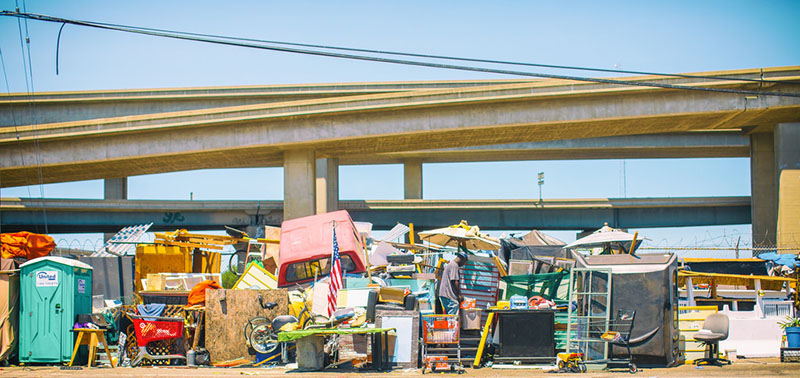What If the Homeless Population of L.A. Became a City?

Imagining What Such a City Would Look Like
Almost 60,000; 57,800 to be more precise. That's how many people are homeless in Los Angeles County on any given night. Imagine a city of just these homeless individuals. What would such a city look like? What about its residents, its health, its future?
According to a Los Angeles Times report, if you walked through Homeless City, you would see that more than two-thirds of its residents are male. Four of every 10 people you meet would be African American—many more than outside this fictional city, where only 9 percent of residents and 12 percent of those living in poverty are African American.
You also wouldn't get very far before being struck by the children of Homeless City. One of every 10 city residents would be a child. You should be particularly worried for these 5,370 youths because experiencing homelessness as a child powerfully predicts later homelessness.
Homeless City's elderly population is also very visible, vulnerable, and growing. Nearly one-quarter of its residents are 55 or older. As average rents in Los Angeles County have increased two times faster than the median income of senior households, seniors are squeezed by soaring rents and fixed incomes and more move in to Homeless City all the time.
People on your tour would be surprised if you smile or offer a kind word. They are used to being ignored by those who sleep in beds at night. You would see weariness and heartache on their faces. But you would also be struck by residents' hope and resiliency. People sweep the sidewalks in front of their tents and share food with their neighbors. Even in the midst of dire poverty, community and kindness are common.
Homeless City's population is exploding. Though many people find housing and leave the city, about 400 others arrive daily. Homeless City is growing far faster than Conroe, Texas, which is the fastest-growing U.S. city with a population of more than 50,000. In 2016, Conroe grew by 7.8 percent; Homeless City grew by 23 percent. Although Homeless City's growth comes predominantly from the return of former residents, around 8,000 of this year's arrivals never experienced homelessness before.
Most residents rest uneasily in Homeless City. Only 26 percent sleep in shelters. The other 42,000 or so sleep in places not meant for human habitation. Day and night, you'll find people sleeping in one of the 15,000 vehicles, tents, or makeshift shelters spread throughout the city.
It's unhealthy and unsafe to live in Homeless City. People who are homeless use the emergency room four times more often than other low-income residents. These visits are particularly challenging because 30 percent of the city's residents have a serious mental illness, 18 percent have a substance abuse disorder, and 2 percent are HIV-positive. The violence in Homeless City disproportionately affects female residents. The average homeless woman in the city experiences as much major violence in a single year as the average American woman experiences in her lifetime.
Death is ever present. Last year, 805 people died in the city. Whereas Californians, on average, can expect to live to 80, the average age of death in Homeless City is just 48.
Perhaps most striking, you realize that your quick walk through Homeless City at a particular point in time dramatically understates its population. Over the course of a year, more than 200,000 people experience homelessness in Los Angeles. That's enough to fill Dodger Stadium four times.
Photo: Thomas Hawk East Bay Express Rated #1 Best Homeless Camp in Bay Area via photopin (license)